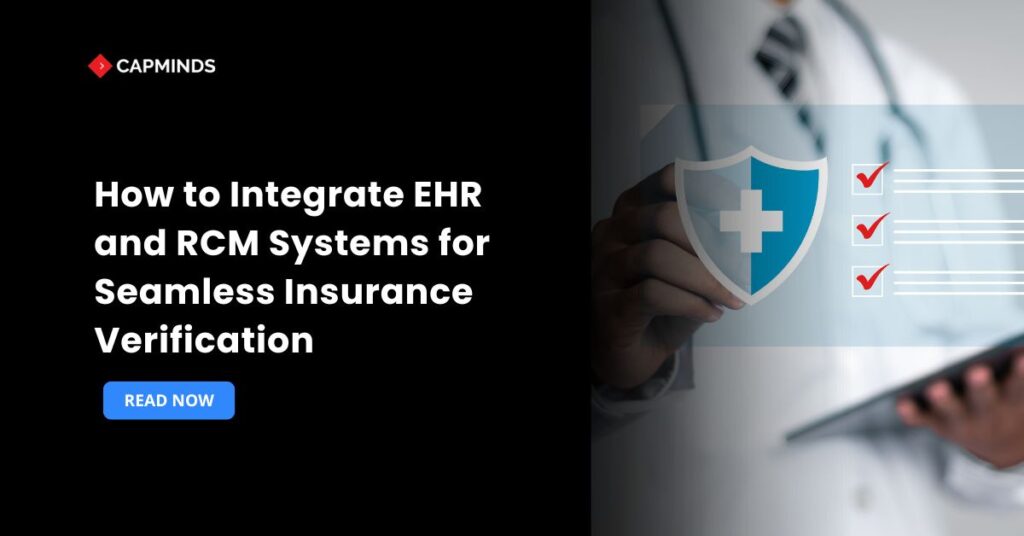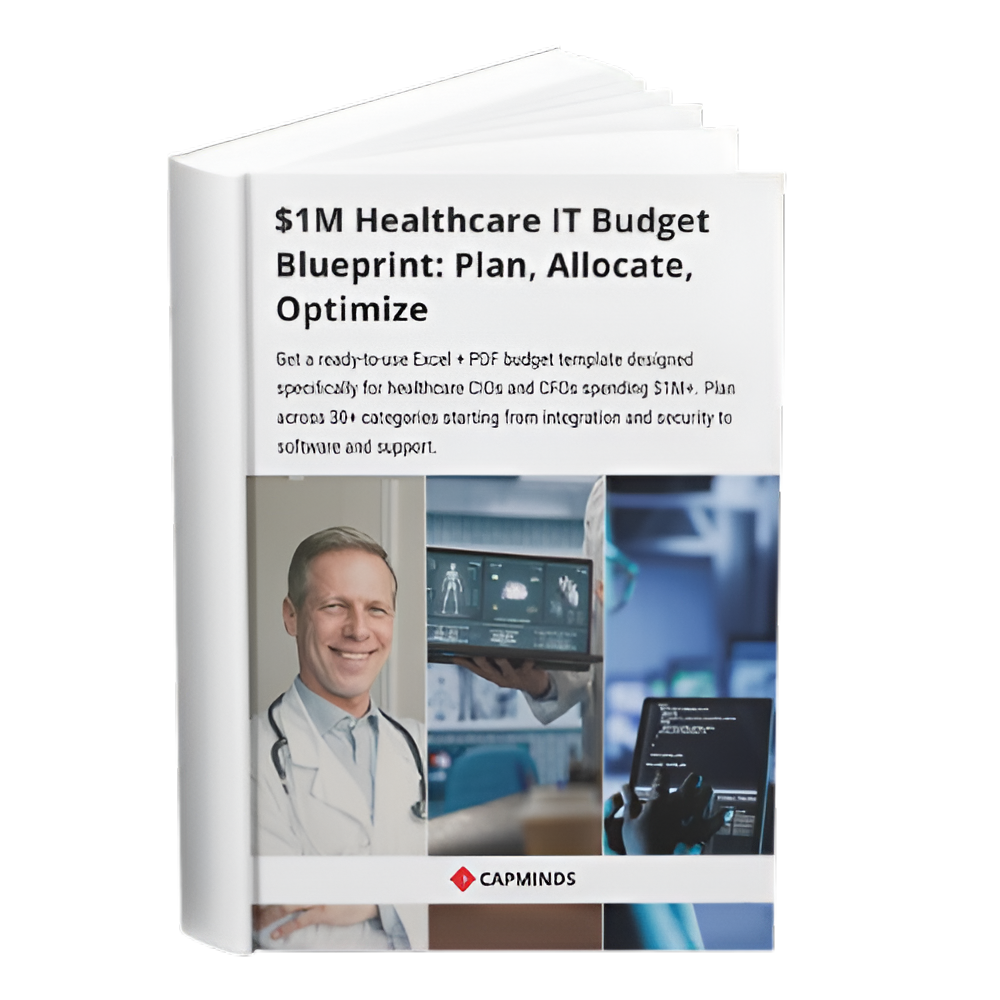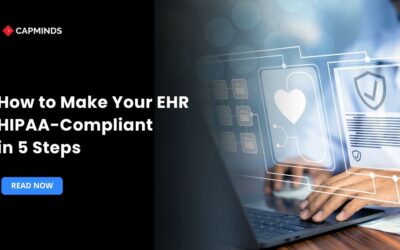How to Integrate EHR and RCM Systems for Seamless Insurance Verification
Healthcare providers are under more pressure to offer high-quality patient care while maintaining their financial stability in the modern healthcare environment. Insurance verification is a vital phase in the RCM process.
Inaccuracies in confirming insurance coverage can lead to patient dissatisfaction, delayed payments, and rejected claims. Faster, more accurate, and more seamless processes are achieved by integrating EHR systems with RCM platforms.
In this blog, you’ll know EHR and RCM integration facilitates smooth insurance verification, why it is necessary, and the best practices for effective implementation.
Importance of Insurance Verification in Healthcare
A successful revenue cycle depends on insurance verification. Before beginning treatment, medical personnel must verify a patient’s insurance eligibility, coverage information, co-pays, and deductibles. If this procedure is manual or imprecise, the dangers increase rapidly.
Denied claims might account for 10-15% of a provider’s revenue cycle troubles. Many denials are due to inaccuracies in insurance verification. Integrating EHR and RCM systems allows clinicians to eliminate manual checks, administrative complexity and verify that claims submitted to payers are clean and correct.
Key advantages of accurate insurance verification include:
- Fewer rejected claims and resubmissions
- Faster reimbursement cycle
- Increased patient satisfaction
- Reduced administrative workload
Why is Integration Between EHR and RCM Important
EHRs have traditionally focused on clinical data, including diagnoses, treatment plans, and patient histories; RCM solutions handle invoicing, claims, and payment processing. Employees must double their efforts by entering data into both systems while they operate independently. Inaccuracies, data gaps, and inefficiencies result from this.
The seamless flow of clinical and financial data is ensured by integrating the two systems. The RCM system automatically verifies a patient’s insurance information when they register in the EHR. This creates a single point of truth for payer and patient data and eliminates redundancy.
Employee productivity is increased through seamless integration. Administrative teams no longer have to hop between platforms or manually verify payer data. Instead, staff workers can concentrate on patient-facing duties as automated verification systems operate in the background.
How EHR and RCM Integration Improves Insurance Verification
Real-time insurance verification can be accomplished when EHR and RCM systems are integrated correctly. This means that instead of after services have been provided, personnel can confirm eligibility during scheduling or patient registration.
When a patient schedules an appointment:
- The EHR collects patient demographics and insurance information.
- The RCM system rapidly links to payer databases.
- Insurance eligibility, coverage restrictions, and co-pay amounts are all confirmed in real time.
This proactive approach makes providers knowledgeable about their patients’ financial obligations. It also reduces the likelihood of claim denial due to incomplete or inaccurate insurance information.
Key Features to Look For in Integration
Not all EHR-RCM integrations are made equally. To enable easy insurance verification, suppliers should look for the following features:
- Automated queries to payer systems during registration or scheduling are known as real-time eligibility checks.
- Data synchronization and accuracy include insurance details and patient demographics, which are the same on both systems.
- Automated claim scrubbing prevents denials by identifying issues before submitting a claim.
- Customizable workflow has the capacity to modify verification procedures to meet the specific needs of each supplier.
Scalability involves systems that can expand alongside the practice as patient numbers increase.
Best Practices for Successful EHR and RCM Integration
1. Evaluate Current Systems
Begin by reviewing your existing EHR and RCM solutions. Identify gaps in insurance verification workflows and assess if current systems can support integration or require changes.
2. Engage Stakeholders
Include the billing, administrative, and clinical divisions in the procedure. Cooperation guarantees that integration satisfies each department’s requirements.
3. Choose the Right Vendor
Select a vendor with health interoperability experience. Make sure they are HIPAA, HL7, and FHIR compliant to secure patient data.
4. Prioritize Staff Training
Even the best technology is of no use without proper training. Allow staff to be trained using hands-on training so that they know how to use combined workflows effectively.
5. Monitor and Optimize
After implementation, continue to monitor system performance. To determine success, track measures like claim denial rates, reimbursement time, and patient satisfaction.
Integration Challenges and Solutions
Despite the benefits, combining EHR and RCM systems presents problems. Data discrepancies, program incompatibilities, and staff opposition to change are all common challenges.
To address these issues, suppliers should:
- To eliminate errors, thoroughly cleanse the data before integrating it.
- Bridge incompatible systems with middleware or APIs.
- Provide continuing training and change management support to employees.
By proactively addressing these difficulties, healthcare organizations can achieve smoother adoption and better outcomes.
ROI for Integrated Insurance Verification
The long-term benefits of investing in integration may offset the initial costs. Improved patient experiences, more revenue flow, and fewer claim denials can all give providers a good return on investment.
For example, practices that implement real-time verification technologies report:
- Up to 25% reduction in refused claims.
- 15-20% faster reimbursement cycles.
- 30% increase in staff productivity.
Such changes not only benefit financial health but also enable providers to reinvest savings in patient care initiatives.
CapMinds EHR & RCM Service for Seamless Insurance Verification
At CapMinds, we help healthcare providers connect EHR and RCM systems to simplify insurance verification and strengthen financial performance.
Our focus is on creating smooth, automated workflows that eliminate manual errors and speed up reimbursements.
With CapMinds, you gain:
- EHR Implementation and Customization – Improved clinical and administrative workflows.
- Revenue Cycle Management Optimization – Faster and cleaner claim submissions.
- Insurance Verification Solutions – Real-time checks for eligibility and coverage.
- Compliance-Ready Integrations – HIPAA, HL7, and FHIR standards are built in.
The result? Fewer denials, faster payments, and more time for patient care. Whether you’re a community clinic, specialty practice, or hospital network, we ensure your financial operations are future-ready.
Partner with CapMinds today to make insurance verification seamless and boost your revenue cycle efficiency.




